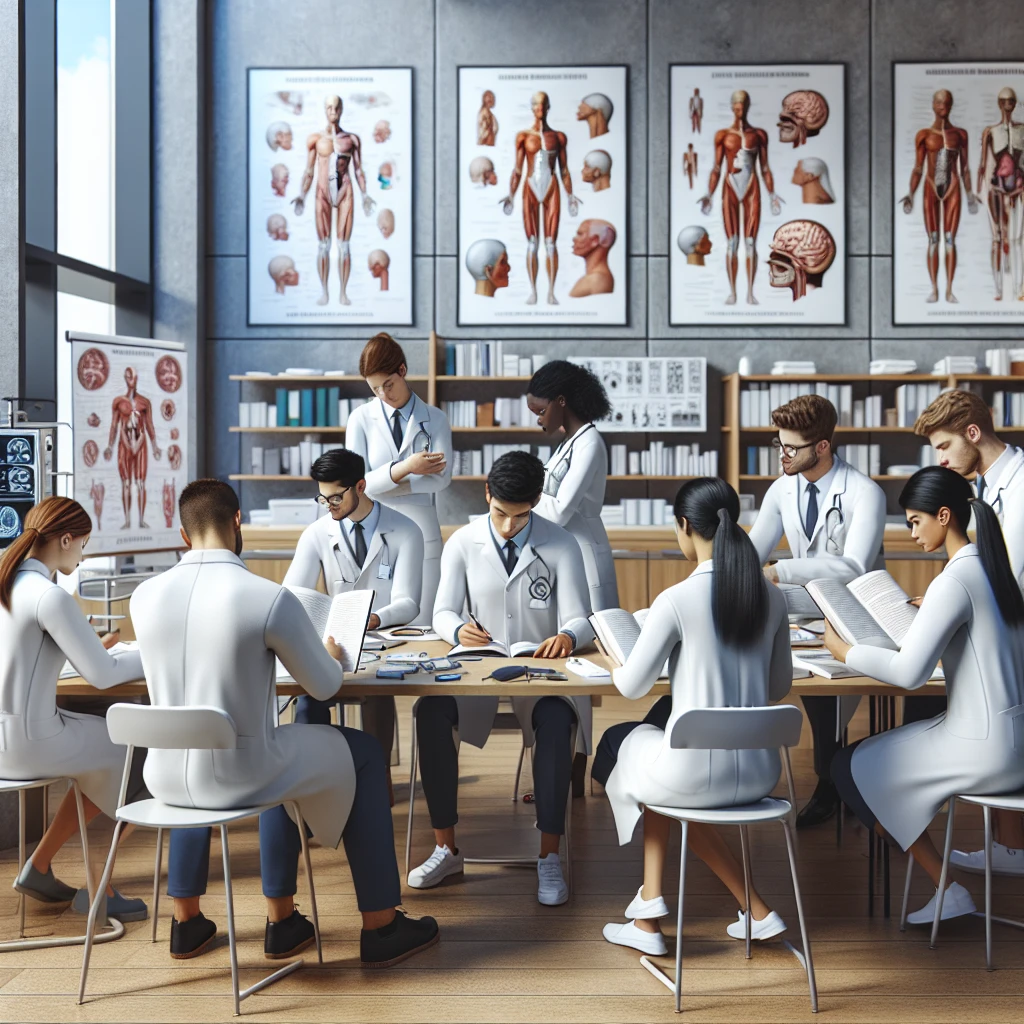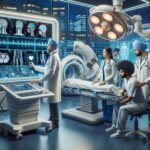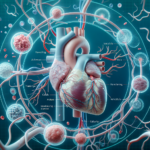
Revolutionizing Medicine with 3D Animation Training
Imagine a world where medical professionals can learn complex procedures with clarity and precision, not just by reading about them or watching a video, but by immersing themselves in a three-dimensional, interactive environment. This isn’t a scene from a sci-fi movie; it’s the reality of 3D animation in medical training today. Let’s dive into how this technology is changing the game for medical education.
Now, let’s get to the meat of the matter. Why should we care about 3D animation in medical training? Well, for starters, it brings concepts to life, making them easier to understand and remember. It’s one thing to read about a heart valve’s function and another to watch it in action, pumping blood in a life-like animation. This isn’t just about cool graphics; it’s about creating a learning experience that sticks.
Key Takeaways
Before we delve deeper, here’s what you need to know at a glance:
- 3D animation provides an immersive learning experience that traditional methods can’t match.
- Visual learning aids in the retention and understanding of complex medical concepts.
- Animated guides enhance surgical precision, potentially reducing errors.
- Technologies like virtual reality and haptic feedback are pushing the boundaries of medical training.
- 3D animation is not just for students; it’s a valuable tool for experienced professionals too.
Visual Learning in Modern Medicine
Let’s talk about visual learning. It’s no secret that we, as humans, are wired to process visual information more effectively than text or speech. In the context of medical training, this means that 3D animations can convey complex anatomical structures and procedures more efficiently than a textbook could ever hope to.
And it’s not just about the visuals. With 3D animation, learners can interact with the models, rotate them, and even simulate procedures. This hands-on approach deepens understanding and fosters a more active learning environment. Think of it as having a virtual cadaver that never decomposes and can be used over and over again, without the ethical concerns.
- Visuals are processed 60,000 times faster than text.
- 65% of people are visual learners.
- Interactive 3D models offer an unparalleled depth of study.
So, what’s the bottom line? If you’re involved in medical training, you should be leveraging the power of 3D animation. It’s effective, engaging, and, frankly, it’s what the next generation of medical professionals expects.
Detailed Visualizations for Complex Procedures
Consider the intricacies of the human body. Now, think about explaining a complex surgical procedure to a group of students or peers. With 3D animation, you can take them on a journey inside the human body, showing them exactly what happens during the procedure, step by step.
This level of detail is invaluable when it comes to training for high-stakes environments like the operating room. For example, let’s say you’re teaching a class on laparoscopic surgery. With 3D animation, you can show the precise movements needed, the placement of instruments, and even the potential complications that could arise—all in a controlled, risk-free setting.
And it’s not just for the novices. Even seasoned surgeons can benefit from these visualizations when preparing for complex or rare cases. It’s like having a rehearsal before the live performance, and we all know how important that can be.
Core Advantages of 3D Animation in Medical Education
Now, let’s break down the core advantages of incorporating 3D animation into medical training. We’re talking about benefits that go beyond the wow factor of impressive graphics—real, tangible advantages that can make a difference in how medical professionals learn and retain information.
Enhanced Comprehension of Anatomical Concepts
First up, comprehension. There’s a reason why “a picture is worth a thousand words” is such a well-worn phrase—it’s true. With 3D animation, students can see the spatial relationships between anatomical structures, something that flat images or text descriptions can’t fully convey.
Take the example of the heart again. By manipulating a 3D model, students can understand how blood flows through the chambers, how valves open and close, and how the muscle contracts. This isn’t just about memorizing facts; it’s about building a mental model that reflects reality.
And when students have a solid grasp of the basics, they can move on to more advanced topics with confidence. It’s like building a house—you need a strong foundation before you can add the walls and roof.
Improving Surgical Precision with Animated Guides
Next, let’s talk about precision. In surgery, every millimeter counts. With 3D animation, surgeons can visualize the exact steps of a procedure before making a single incision. This preparation can lead to more precise movements, less tissue damage, and ultimately, better outcomes for patients.
Imagine a world where surgical errors are significantly reduced because every surgeon has had the opportunity to practice virtually. That’s the potential power of 3D animation in medical training. It’s not just about learning; it’s about improving the quality of care we provide.
And it’s not just theoretical. Studies have shown that surgeons who train with 3D models and simulations are more accurate and faster in their procedures. This isn’t just good for the patients; it’s good for the healthcare system as a whole.
Interactive Learning for Student Engagement
Engagement is another key benefit. Let’s face it, not everyone finds reading textbooks or attending lectures the most thrilling way to learn. But with 3D animation, you can capture the attention of learners in a way that traditional methods can’t.
By making learning interactive, you’re not just teaching; you’re creating an experience. And when students are actively engaged, they’re more likely to retain information and develop a passion for the subject. It’s the difference between passively watching a movie and being part of the action.
And in a field as critical as medicine, where lifelong learning is a must, fostering that passion and curiosity is essential. We’re not just training students to pass exams; we’re shaping the future of healthcare.
Improving Surgical Precision with Animated Guides
Consider the precision required in surgery. It’s akin to the meticulous work of an artist, where every movement can change the outcome. With animated guides, surgeons can visualize and practice complex procedures before stepping into the operating room. These guides serve as a detailed map, ensuring that every incision and suture is placed with the utmost accuracy. It’s like having a GPS for surgery – you know exactly where to go and what to avoid.
For instance, when preparing for a delicate spinal operation, surgeons can use 3D animations to study the approach, understand the layers of tissue they will encounter, and plan their strategy to avoid critical nerves. This preparation can significantly decrease the chances of complications, leading to safer surgeries and happier patients.
Interactive Learning for Student Engagement
Now, let’s shift our focus to engagement. Interactive 3D animations are not just visually stimulating; they invite students to take control of their learning experience. By rotating, zooming, and dissecting virtual models, learners can explore the human body in ways that were once impossible. This hands-on approach caters to a variety of learning styles and keeps students involved and interested.
For example, a student studying cardiology can manipulate a 3D heart model to see it from every angle, understand the flow of blood, and even simulate heart conditions. This level of interaction ensures that the learning process is not just a passive intake of information but an active, engaging journey that fosters deep understanding and retention of knowledge.
Leading Technologies in 3D Medical Animation
As we continue to push the boundaries of medical training, let’s take a look at the cutting-edge technologies that are making these advancements possible. From software to virtual reality, the tools we have at our disposal are transforming the way we teach and learn medicine.
Software Pioneers in Medical Visualization
At the forefront of this revolution are software pioneers dedicated to creating realistic, detailed, and interactive 3D models of the human body. These platforms allow for the creation of animations that are not just visually impressive but scientifically accurate down to the smallest detail.
Programs like Zygote Body and Visible Body, for instance, offer comprehensive anatomical models that are used by students and professionals alike. These tools have become invaluable resources for those looking to understand the complexities of human anatomy in a more dynamic and intuitive way.
Furthermore, specialized software like Surgical Theater combines the power of 3D visualization with patient-specific data, allowing surgeons to plan and rehearse surgeries on virtual models of their patients’ anatomy. This level of customization is unprecedented and is a game-changer for surgical planning and patient care.
Integration of Virtual Reality
Virtual reality (VR) takes 3D medical animation to the next level by immersing users in a fully interactive, three-dimensional environment. With VR, medical students and professionals can enter a virtual operating room and practice procedures in a life-like setting without any risk to real patients.
Imagine donning a VR headset and being transported into a virtual lab where you can perform a heart transplant. The experience is so real that you can almost feel the heartbeat. This is not just about learning procedures; it’s about gaining experience in a safe, controlled environment.
VR technology is not just for individual learning; it’s also being used for collaborative training, allowing teams to practice complex surgeries and emergency responses together. This collaborative aspect of VR training helps to improve communication and teamwork, which are crucial in high-pressure medical situations.
Advancements in Haptic Feedback Systems
Haptic feedback systems are another technological marvel enhancing 3D medical training. These systems provide tactile sensations that simulate the feel of real-life surgical procedures. When combined with 3D animation and VR, they offer an incredibly realistic training experience.
For instance, when practicing a laparoscopic surgery with a haptic device, students can feel the resistance of tissue and the pressure needed to make an incision. This sensory feedback is invaluable for developing the muscle memory and fine motor skills necessary for surgery.
As we continue to explore the possibilities of 3D animation in medical training, it’s clear that the integration of these technologies is not just enhancing education but is also setting a new standard for how we prepare the next generation of medical professionals.





